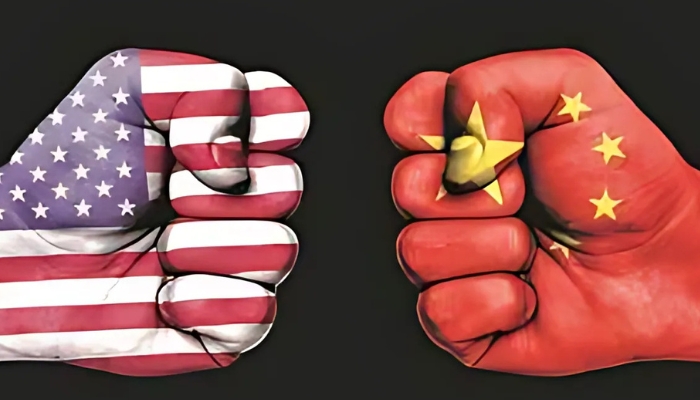90-Day Agreement Offers Temporary Relief Amid Lengthy Trade Dispute

U.S. and China sign groundbreaking agreement to cut tariffs, signaling improved trade relations.
n Monday, the United States and China reached a surprising agreement to significantly reduce tariffs on each other's products for an initial 90-day period—an unexpected development that has eased tensions in the ongoing trade conflict and lifted global market confidence.
In their joint statement, both nations emphasized the value of building a stable, lasting, and mutually advantageous economic and trade partnership.
Global investors are welcoming signs of easing tensions in the trade conflict triggered by U.S. President Donald Trump’s sweeping tariffs, which have unsettled financial markets, strained supply networks, and heightened concerns about a potential recession.
During afternoon trading in Asia, Dow futures surged over 2%, S&P 500 futures climbed close to 3%, and Nasdaq Composite futures—dominated by tech stocks—rose by more than 3.5%. Asian markets followed suit, with Hong Kong’s Hang Seng index advancing over 3%.
The revised tariffs from both countries are set to take effect by May 14. While the 20% U.S. tariffs on China linked to fentanyl, introduced earlier in February and March by President Donald Trump, will remain in place, both nations have agreed to reduce their respective tariffs on each other by 115 percentage points for a 90-day period.
According to the joint statement (source: CNN), this translates to a temporary reduction in U.S. tariffs on Chinese products from 145% down to 30%, while China will slash its duties on American goods from 125% to just 10%.
The trade conflict has had a significant impact on both the U.S. and Chinese economies. America’s GDP, the most comprehensive indicator of economic health, recorded its first quarterly decline since early 2022, as importers hurried to stock up on goods before the steep tariff rates took effect.
In China, exports to the U.S. saw a significant decline last month, putting pressure on the country’s vast manufacturing sector. Factory activity in China shrank at its quickest rate in 16 months in April, prompting Beijing to accelerate its efforts to implement new economic stimulus measures.
Dan Ives, a managing director at Wedbush Securities in New York, described the decision to halt most tariffs on each other's goods as the "best possible outcome" from the weekend discussions.
He wrote in a research note, “This is undoubtedly only the beginning of more extensive and detailed negotiations, and we anticipate significant reductions in these tariff rates in the coming months as the discussions advance” (source: CNN).
The two countries also agreed to create "a framework for ongoing discussions regarding economic and trade ties," to be led by Chinese Vice Premier He Lifeng, U.S. Treasury Secretary Scott Bessent, and U.S. Trade Representative Jamieson Greer, as stated in the joint announcement.
The statement further noted, "These talks could take place alternately in China, the United States, or a third country, as agreed upon by both parties. Additionally, if necessary, the two sides may hold working-level consultations on specific economic and trade matters."
During a press conference in Geneva on Monday, Bessent stated, “Both delegations are in agreement that neither side desires decoupling. The extremely high tariffs that have been imposed... were effectively like an embargo, and neither side wants that. We aim for trade. We seek a more balanced trade relationship, and I believe both sides are committed to making that happen.”
A representative from China’s Commerce Ministry referred to the joint statement as "a significant move by both parties to address differences through dialogue and consultation on an equal basis, setting the stage and creating the conditions for narrowing gaps and enhancing cooperation."
Beijing’s optimistic and conciliatory tone marks a sharp departure from its earlier stance on the trade dispute with the U.S. For weeks, Chinese officials had maintained a firm position, insisting that the U.S. eliminate all tariffs on China before agreeing to engage in negotiations.
The significant, though temporary, breakthrough came as a surprise. Just a week earlier, Bessent had tempered expectations by stating that his aim for the discussions was "to de-escalate tensions," rather than secure "a major trade deal," as the U.S. and China had been at an effective impasse since Trump implemented his tariff strategy.
Note: For More Information To Visit MBBReviews
Comments